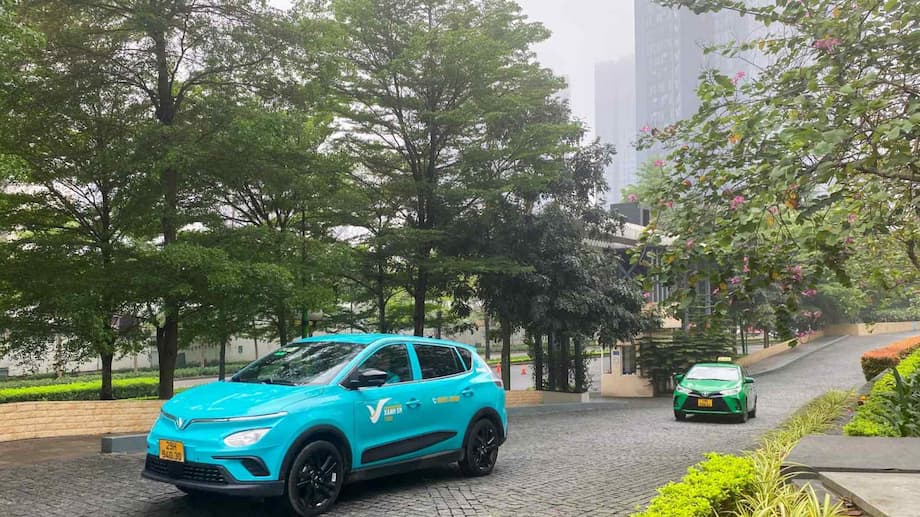VinFast’s Electric Vehicles: A New Era for Ho Chi Minh City
Returning to Ho Chi Minh City after several years away, one cannot help but notice a striking transformation on its bustling streets. Where once gasoline-powered cars and a sea of motorbikes dominated, now turquoise VinFast electric vehicles (EVs) are everywhere. At any given traffic light, two or three out of every six cars might be a VinFast, their distinctive color and design signaling a new chapter in Vietnam’s transportation story. This rapid rise is not just a matter of numbers—it’s a symbol of Vietnam’s ambitious push toward sustainable mobility and a cleaner urban environment.
- VinFast’s Electric Vehicles: A New Era for Ho Chi Minh City
- How Did VinFast Become Ubiquitous in Ho Chi Minh City?
- Vietnam’s EV Market: Growth, Competition, and Challenges
- Why Are Vietnamese Consumers Embracing EVs?
- VinFast’s International Ambitions and Economic Impact
- What Does the Future Hold for EVs in Ho Chi Minh City?
- In Summary
How Did VinFast Become Ubiquitous in Ho Chi Minh City?
VinFast, a subsidiary of Vingroup (Vietnam’s largest private conglomerate), was founded in 2017 with the goal of creating a homegrown automotive industry. Initially producing gasoline vehicles, VinFast pivoted rapidly to electric cars, buses, and scooters. The company’s bold strategy—backed by billions in investment and strong government support—has paid off. Today, VinFast is not only the leading EV brand in Vietnam, but also a key player in the country’s green revolution.
Observers and residents alike are amazed at the speed of this transformation. As one recent visitor noted, “From totally non-existent the last time I was here a few years back, to easily a top three brand on the streets of Ho Chi Minh now. They’re everywhere. Ubiquitous.”
“Most of these cars are cabs on VF’s own Xanh SM rideshare network — VinFast operates at least two major tiers of car service, the regular bright blue VF e34 and VF5 units, as well as the Xanh Luxury VF6 and VF8 cars. Surprisingly, the luxury service seems quite popular — I’ve seen almost as many VF8s as I have VF5s, although the VF e34 is king.”
This firsthand account from a local EV enthusiast highlights not just the presence of VinFast vehicles, but also their integration into daily life through ride-hailing and taxi services.
Government Policy and Market Incentives
Vietnam’s government has played a crucial role in this shift. Policies such as a 100% exemption on registration fees for battery electric vehicles (BEVs) until at least February 2027 have made EVs significantly more affordable. Registration fees, which can range from 10% to 12% of a vehicle’s value, are a major cost for buyers. By waiving these fees, the government has narrowed the price gap between EVs and traditional gasoline vehicles, making the switch more attractive for consumers.
Additionally, Vietnam’s Decision 876 mandates that by 2030, all taxis in urban areas must run on electricity or clean energy. This has accelerated the adoption of EVs among taxi and ride-hailing fleets, with VinFast’s Xanh SM service leading the way. The government’s vision is clear: to reduce greenhouse gas emissions, improve air quality, and position Vietnam as a leader in sustainable transportation in Southeast Asia.
VinFast’s Business Model: From Manufacturing to Mobility Services
VinFast’s strategy extends beyond simply selling cars. The company has invested heavily in building a nationwide charging infrastructure, with over 150,000 charging ports installed at shopping malls, apartment complexes, and public spaces. This network is largely exclusive to VinFast vehicles, giving the brand a significant competitive advantage over foreign rivals like BYD and Wuling, whose customers often struggle to find convenient charging options.
Moreover, VinFast has vertically integrated its operations by supplying vehicles to its own ride-hailing and taxi service, Xanh SM. This approach ensures a steady demand for VinFast cars and helps the company quickly scale up its presence in major cities. According to Al Jazeera, Xanh SM has already become the second-most popular ride-hailing service in Vietnam, operating 20,000 cars and 22,000 motorbikes in nearly half the country.
Vietnam’s EV Market: Growth, Competition, and Challenges
The Vietnamese EV market has experienced explosive growth in recent years. According to the Vietnam Automobile Manufacturers Association, total vehicle sales in the first half of 2025 reached 226,500 units—a 70% increase over the previous year. VinFast alone delivered 67,569 EVs in that period, capturing about 30% of the total automobile market share. The market is projected to reach a value of $5-7 billion within the next five years, with an estimated 250,000-300,000 EVs already on the road.
While VinFast leads the pack, competition is heating up. Global brands like BYD, Hyundai, Wuling, Mercedes-Benz, and Audi have entered the Vietnamese market, particularly in the luxury segment. However, VinFast’s dominance in charging infrastructure and its homegrown appeal have made it difficult for foreign brands to gain significant traction. For example, BYD, the world’s top EV maker, faces challenges due to VinFast’s near-monopoly on charging points and lingering anti-China sentiment among Vietnamese consumers.
Charging Infrastructure: The Bottleneck to Further Growth
Despite the rapid adoption of EVs, charging infrastructure remains a critical challenge. Most public charging stations are located in new urban areas, shopping malls, or manufacturer-operated service points, making it difficult for many users—especially those living in older neighborhoods or apartment buildings—to find convenient charging options. The lack of a robust, shared charging network limits the appeal of non-VinFast EVs and could slow the overall pace of electrification.
“Vietnam is experiencing rapid growth in electric car and motorbike adoption, signaling a major shift in transportation. However, experts warn that this momentum could be hindered without a swift expansion of charging infrastructure.”
(SGGP English Edition)
VinFast has responded by introducing franchise charging stations and partnering with gas station operators to expand its network. Yet, challenges remain, including fire safety regulations, grid capacity, and the need for government coordination. Safety concerns have also arisen, particularly with the use of non-standard chargers or modifications, as highlighted by a recent incident in Ho Chi Minh City where a VinFast VF 3 caught fire after being fitted with aftermarket headlights.
Why Are Vietnamese Consumers Embracing EVs?
Several factors are driving the surge in EV adoption in Vietnam:
- Environmental Awareness: Urban pollution and climate change have become pressing concerns, especially in major cities like Ho Chi Minh City and Hanoi. Consumers are increasingly motivated by environmental protection when choosing vehicles.
- Cost Savings: EVs offer lower operational costs compared to gasoline vehicles, particularly as fuel prices rise. Government incentives further reduce the total cost of ownership.
- Smart City Initiatives: Vietnam’s push for smart city development aligns with the adoption of electric vehicles, which are seen as integral to modern, connected urban environments.
- Young, Tech-Savvy Population: Vietnam’s growing middle class and youthful demographic are more open to new technologies and sustainable lifestyles.
VinFast has capitalized on these trends by offering a range of models at different price points, from the affordable VF3 to the luxury VF8 and VF9. The company also provides incentives such as free charging at V-Green stations for new buyers and a gasoline-to-electric vehicle exchange program.
The Role of Ride-Hailing and Public Transport
Taxi and ride-hailing services have played a significant role in normalizing EVs for the average Vietnamese consumer. Xanh SM, VinFast’s ride-hailing arm, has rapidly expanded its fleet and market share, challenging established players like Grab. The government’s mandate for all urban taxis to be electric by 2030 ensures that this trend will only accelerate in the coming years.
Public transport is also being electrified, with VinFast producing electric buses and collaborating with local authorities to modernize city fleets. These efforts not only reduce emissions but also provide a visible demonstration of EV technology in everyday life.
VinFast’s International Ambitions and Economic Impact
VinFast’s ambitions extend far beyond Vietnam’s borders. The company has made high-profile debuts at international auto shows, including the LA Auto Show in the United States, and has announced plans to export vehicles to North America and Europe. VinFast’s US expansion includes the establishment of a California headquarters and plans for a manufacturing plant, though these efforts have faced delays and financial challenges.
Domestically, VinFast’s success is seen as a catalyst for broader economic growth. The company’s investments in manufacturing, supply chains, and infrastructure have created jobs and attracted foreign investment. Vietnam’s participation in free trade agreements, such as the EU-Vietnam FTA, positions the country as a potential regional hub for EV and battery production.
Challenges on the Road Ahead
Despite its achievements, VinFast faces significant hurdles:
- Financial Losses: The company has reported substantial losses as it invests heavily in scaling up production and infrastructure.
- Quality and Perception: Some consumers and experts have raised concerns about the quality and pricing of VinFast vehicles, especially compared to cheaper Chinese alternatives.
- Infrastructure Gaps: The lack of a comprehensive, shared charging network remains a bottleneck for further growth and for the entry of foreign competitors.
- International Competition: As global brands ramp up their presence in Vietnam and Southeast Asia, VinFast will need to maintain its edge in innovation, pricing, and customer service.
What Does the Future Hold for EVs in Ho Chi Minh City?
Vietnam’s electric vehicle revolution is still in its early stages, but the momentum is undeniable. With supportive government policies, a young and environmentally conscious population, and aggressive investment from companies like VinFast, the country is poised to become a leader in green mobility in Southeast Asia.
For Ho Chi Minh City, the proliferation of VinFast EVs is just the beginning. As charging infrastructure expands and more consumers experience the benefits of electric vehicles, adoption is expected to accelerate. The city’s streets—once choked with exhaust fumes—could soon become a showcase for sustainable urban transport.
However, realizing this vision will require continued investment in infrastructure, regulatory clarity, and a focus on safety and quality. If these challenges are addressed, Vietnam’s journey from gasoline to electric could serve as a model for other emerging economies seeking to balance growth with environmental responsibility.
In Summary
- VinFast electric vehicles have rapidly become a common sight on Ho Chi Minh City’s streets, symbolizing Vietnam’s shift toward sustainable transportation.
- Government incentives, such as registration fee exemptions and mandates for electric taxis, have fueled EV adoption.
- VinFast’s dominance is supported by its extensive charging infrastructure and integration with ride-hailing services like Xanh SM.
- The Vietnamese EV market is growing rapidly, with projections of $5-7 billion in value within five years and hundreds of thousands of EVs already on the road.
- Charging infrastructure remains a key challenge, limiting the growth of non-VinFast brands and overall market expansion.
- VinFast faces competition from global brands, financial pressures, and the need to maintain quality and affordability.
- Vietnam’s experience offers valuable lessons for other emerging markets aiming to transition to green mobility.




